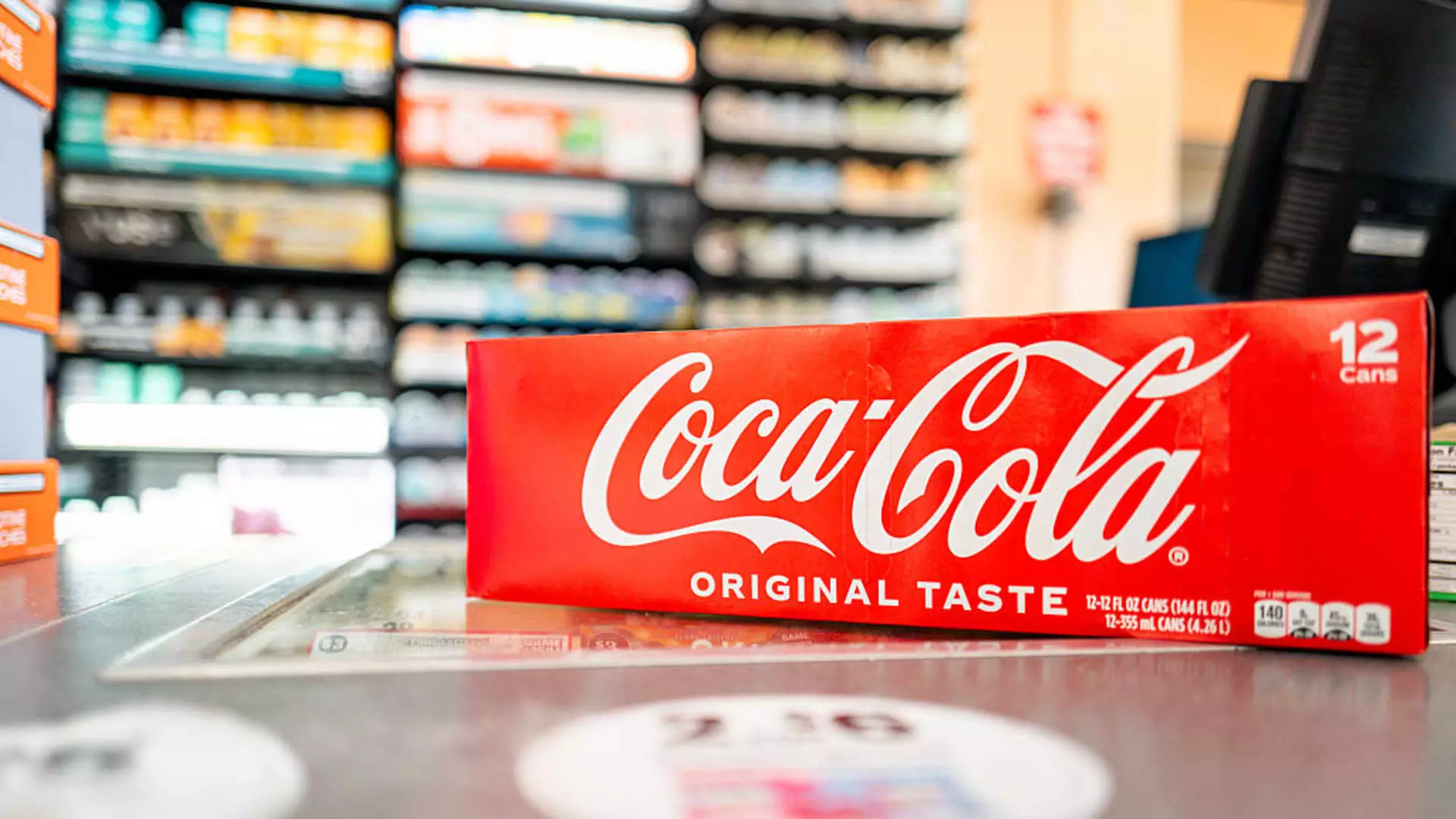Coca-Cola’s recent financial report paints a picture of a company battling to maintain its dominance amid turbulent economic tides. While the headline figures momentarily evoke confidence—exceeding analyst expectations in earnings per share and revenue—the underlying nuances reveal a more troubling story. The company’s ability to generate higher-than-expected earnings masks a concerning reality: core demand is weakening globally, and the company’s defensive strategies are only partially effective at best.
Despite the slight uptick in organic revenue—an important indicator of real growth—overall volume sales continue to decline, hinting at a deeper struggle to retain consumer loyalty. The 1% decline in global unit case volume is emblematic of a broader trend: a waning appetite for carbonated soft drinks, a segment that once seemed indomitable. Even in stable markets like EMEA, which posted 3% volume growth, the gains are marginal and possibly unsustainable if global economic pressures persist. The narrative of recovery is overly optimistic, glossing over the significant headwinds in key markets like North America, Latin America, and Asia-Pacific.
The Illusion of Market Resilience
Coca-Cola’s leadership seems to cling to a narrative of resilience, but closer inspection reveals cracks in that foundation. CEO James Quincey emphasizes that in markets like the U.S. and Europe, demand has improved sequentially, suggesting a strategic pivot is working. However, these gains are fragile. The fact that North American volume declined by 1%, despite some improvement, indicates that consumer habits are shifting and that Coca-Cola’s traditional appeal is under siege from healthier alternatives and changing preferences.
More troubling is the company’s acknowledgment of declining sales among Hispanics—an influence driven by social media rumors and misinformation, which the company claims to have dispelled. The episode exemplifies the volatile nature of brand perception in the digital age, especially when consumer trust can be easily undermined by misinformation campaigns. The dip in Latin America and Asia-Pacific further underscores that no market is immune from macroeconomic shocks or regional issues.
Hedging bets on volume is becoming increasingly perilous as the company’s core products—particularly sparkling beverages—face declining demand. The 1% contraction in sparkling soft drinks and even sharper drops in juice and dairy segments serve as warning signs that the company’s reliance on aging product lines may be a strategic blind spot. The decision to introduce a cane sugar soda in the U.S., while seemingly a nostalgic nod to traditional consumers, risks alienating health-conscious buyers and could be a misguided attempt to cling to old glory instead of innovating for the future.
Strategic Delusions and the Price of Complacency
Coca-Cola’s financial outlook reveals a troubling complacency rooted in overconfidence. Narrowing its earnings growth outlook to 3% for the year suggests an acknowledgment that the previous aspirations may have been overly optimistic. The company’s projection of 5% to 6% organic revenue growth remains hopeful but increasingly tenuous in a marketplace favoring sustainability, health, and innovation.
What’s missing from Coca-Cola’s narrative is a sincere acknowledgment of the structural shifts undercutting its business model. The beverage giant still banks heavily on pricing strategies and diversified product lines, yet these tactics can only buy so much time. Market share erosion among core products and the deceleration of volume sales across key regions demand a fundamental reevaluation of the company’s strategy.
By doubling down on traditional soda offerings and somewhat dismissing the rising tide of health and wellness trends, Coca-Cola risks becoming a relic rather than a vibrant leader. The company’s efforts to persuade investors that “plans are working” appear increasingly disconnected from reality. That it suffered less than 1% decline in premarket trading might seem reassuring, but it conceals a fragile confidence built on superficial metrics rather than genuine consumer loyalty or innovative growth.
Coca-Cola’s story at this juncture is one of cautious acknowledgment—yet still perilously optimistic—of a company clinging to legacy products amid a rapidly evolving landscape. If the internal strategies do not adapt to the changing preferences and societal priorities, the company’s future may hinge on slow decline rather than a sustainable revival.


Leave a Reply